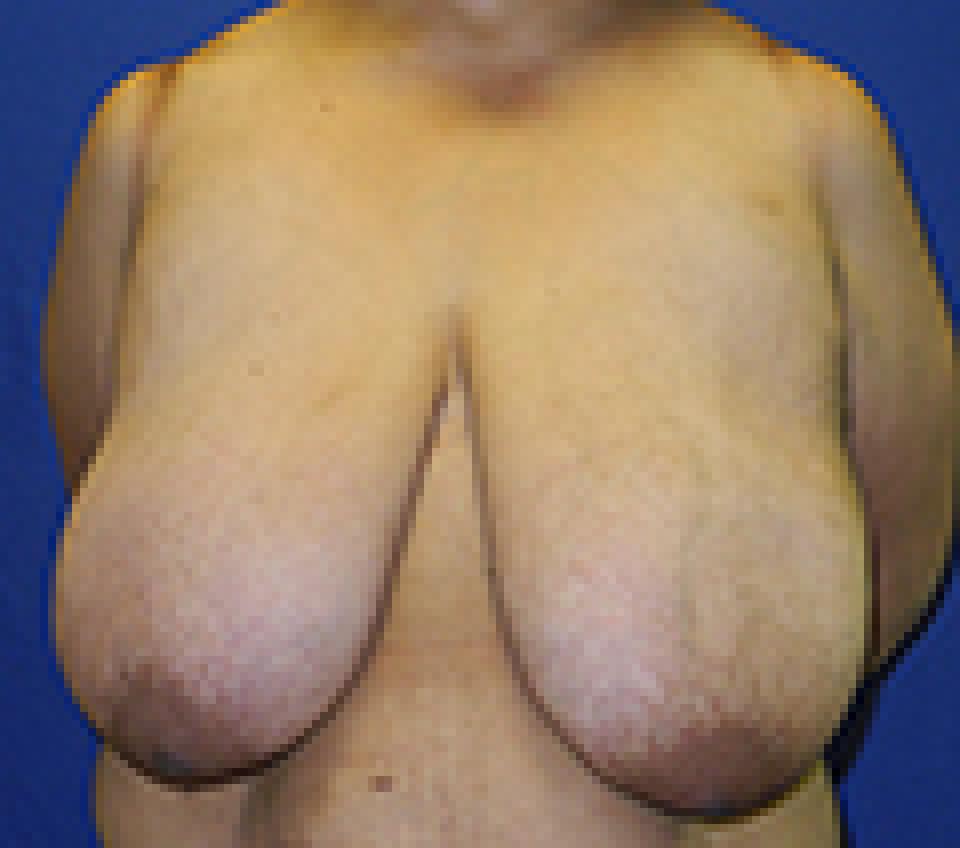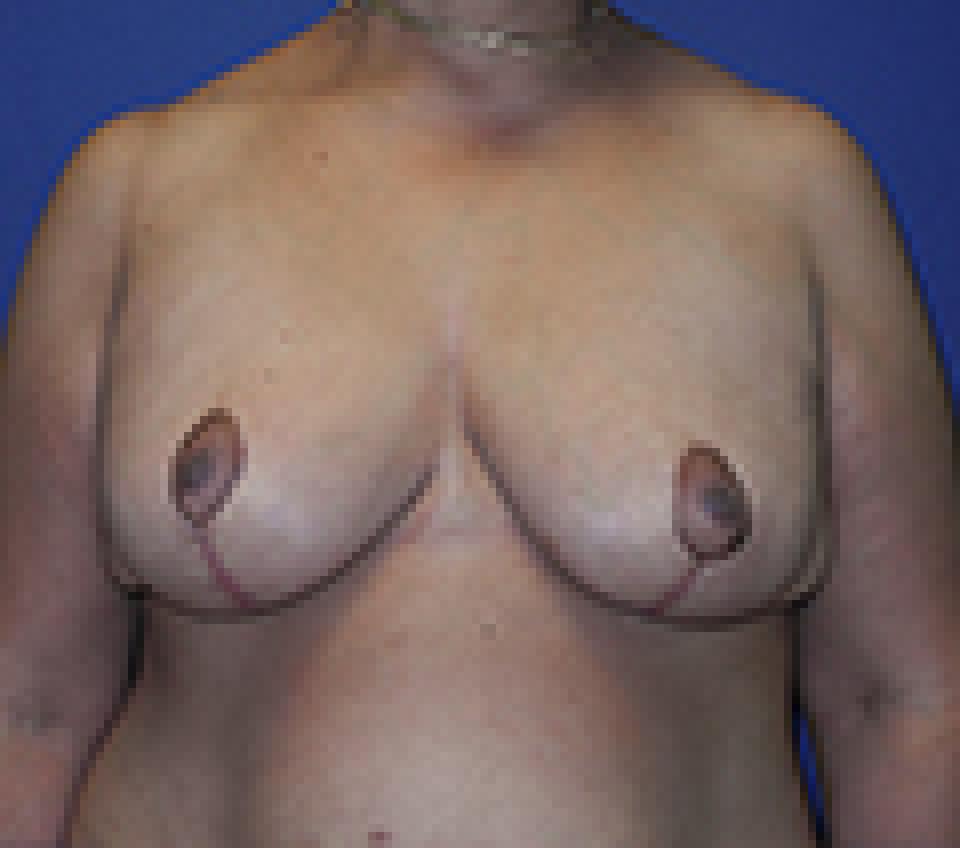Nipple
The word “nipple” derives from the Anglo-Saxon neb meaning a nose, and was described at that time as “neble of a woman’s pappe.”
It is a cylindrical eminence in the anatomic center of the breast, anatomically the mammary gland, and is the outlet for that gland’s secretions: human milk. Normally it is located in the mid-clavicular line at the level of the 4th intercostal space. But since the breast has been likened to Easter as a “moveable feast” it is found at varying levels according to the degree of breast sagging. In fact, there may be more than one nipple each side, placed following the milk line extending from armpit to groin as it does in the sow.
In structure, the outer layer of skin, epidermis, is colored as is the areola. Centrally the 15-20 mammary ducts run both to the very apex of the nipple and to its sides. The tissue between ducts and skin is a connective tissue stroma, comprising a small quantity of fatty tissue, collagen bundles, blood vessels and nerves, and in the female particularly, strands of smooth muscle.
The nipple will swell and become generally more prominent in lactation.
It has, much more in the female than the male, the ability to “erect” or stand out prominently (known vulgarly as “headlights on”) as a result of stimulation; this may be sexual in nature (direct physical contact or merely a thought process), or it may be from the irritation of rubbing on a shirt when running, or a response to a frigid ambience. The erection is brought about by the smooth muscle fibers embedded in the nipple.
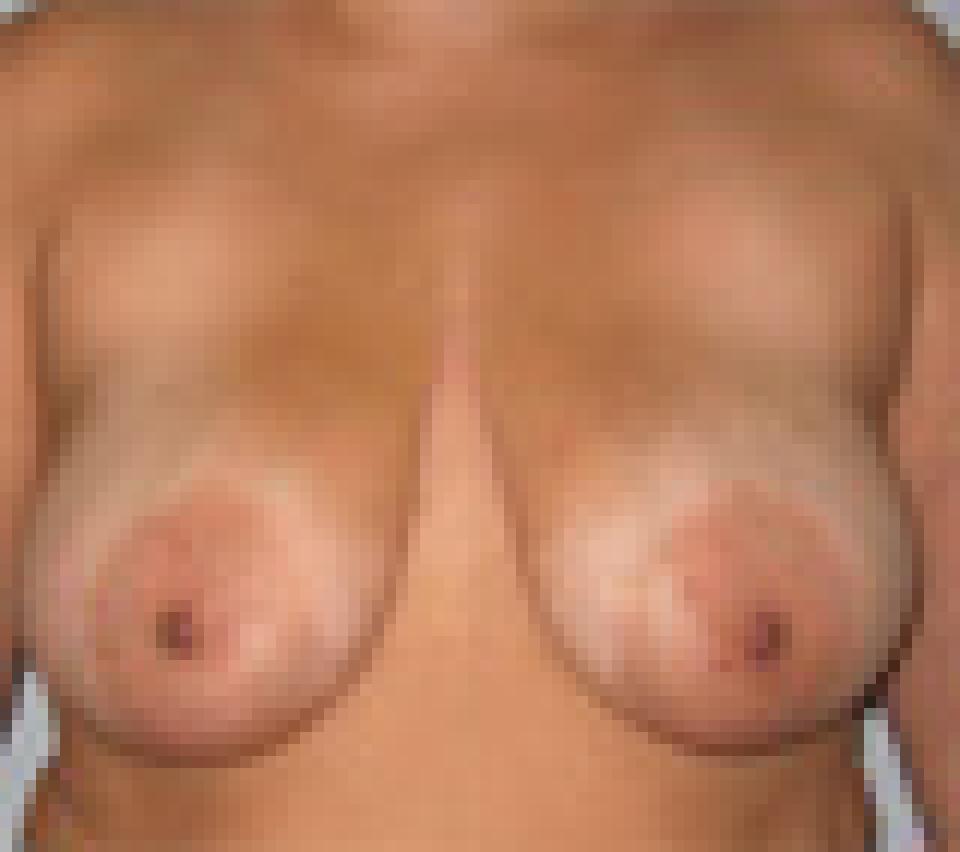 before
before
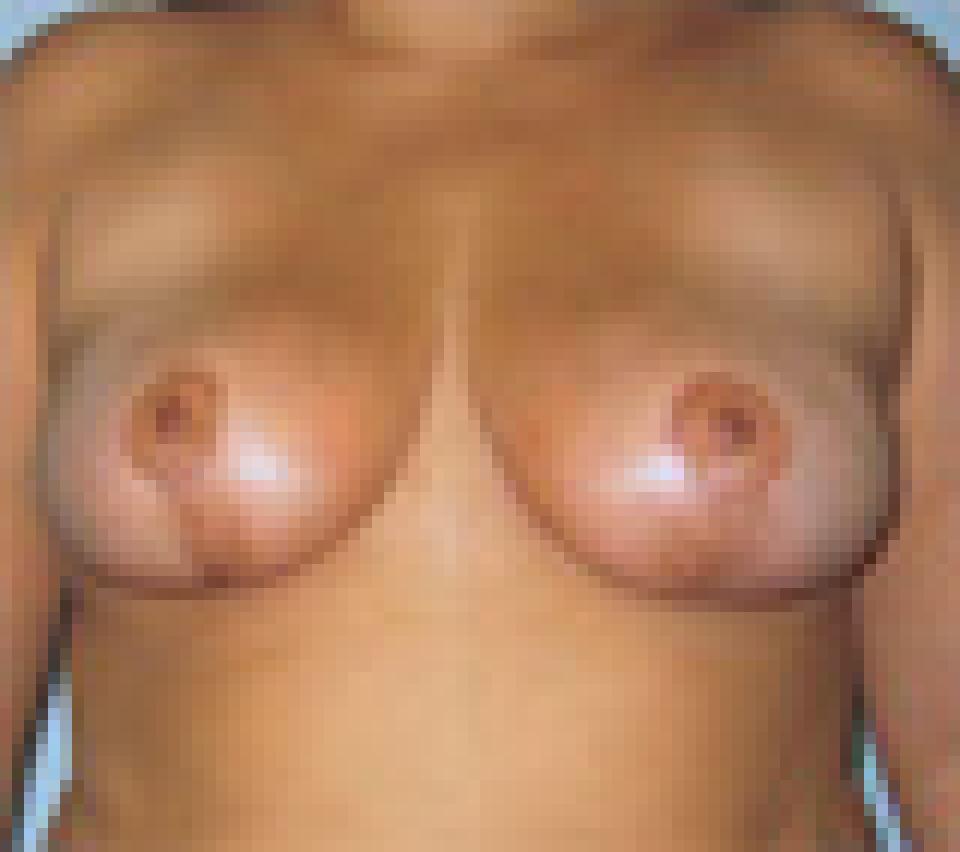 after
after
This case depicts a 41 year old woman who wished to have slightly smaller and shapelier breasts. She underwent breast reduction using an inverted T or "anchor" incision pattern.
Her post-operative photographs depict her appearance approximately two months after surgery.
With optimal design before surgery, the portion of this incision that runs along the fold of the breast is nearly completely hidden. Reduction of the areolar size for balance and proportion is an additional advantage of this procedure.
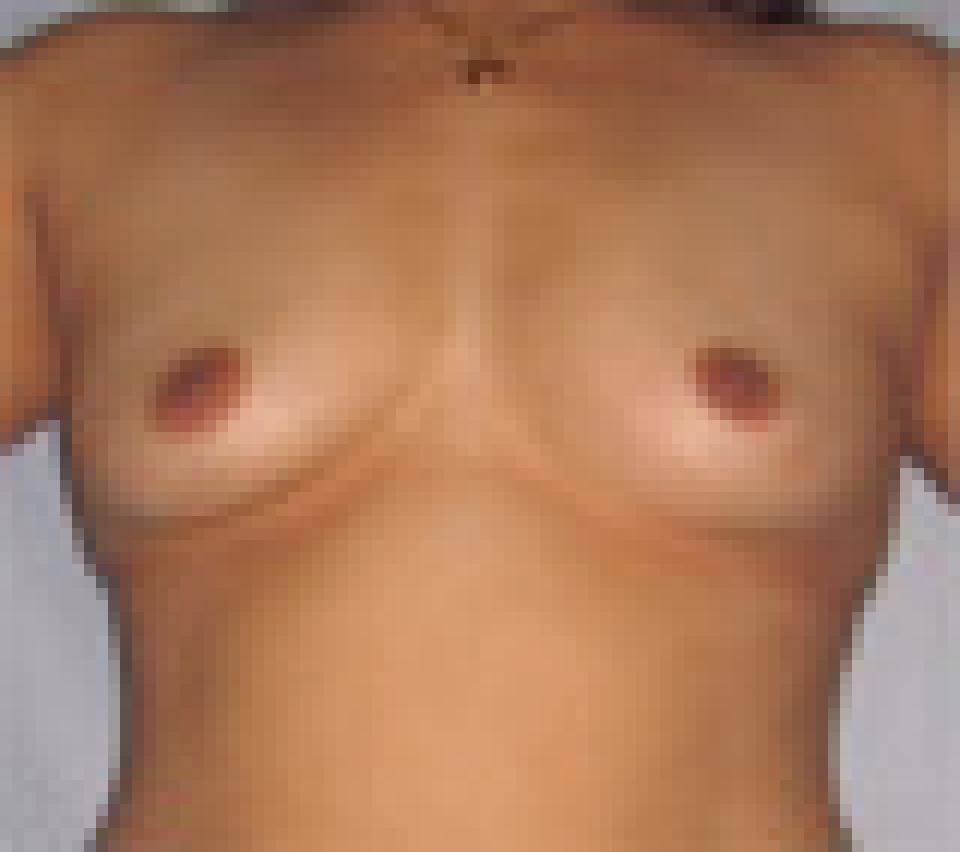 before
before
 after
after
This case depicts a 40 year old woman who wished to have a larger and fuller bust.She underwent placement of 350 cc smooth, round saline implants. The implants were placed partiallly beneath her pectoralis muscles through an incision in the lower fold of the breast.
The post-operative photographs depict her at 3 months after surgery. The inframmamary fold incision is a particularly good option for women who have a well-developed breast fold before surgery. Because of this individual's anatomy, the incisions will be difficult to see at any angle.
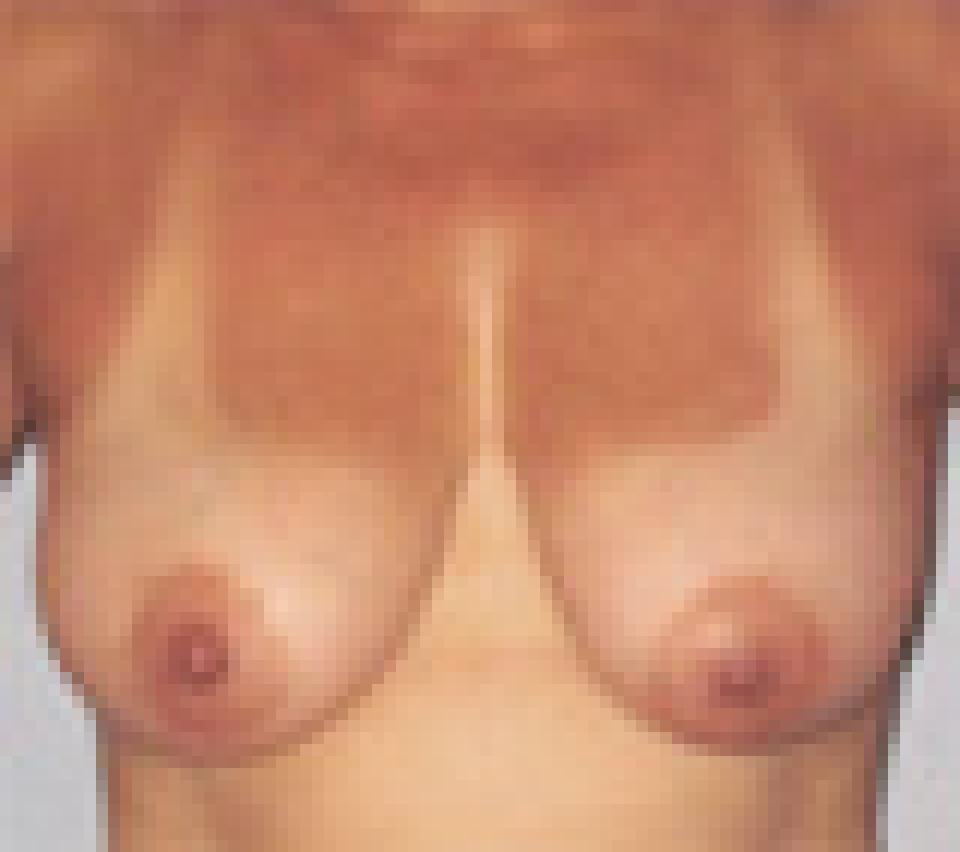 before
before
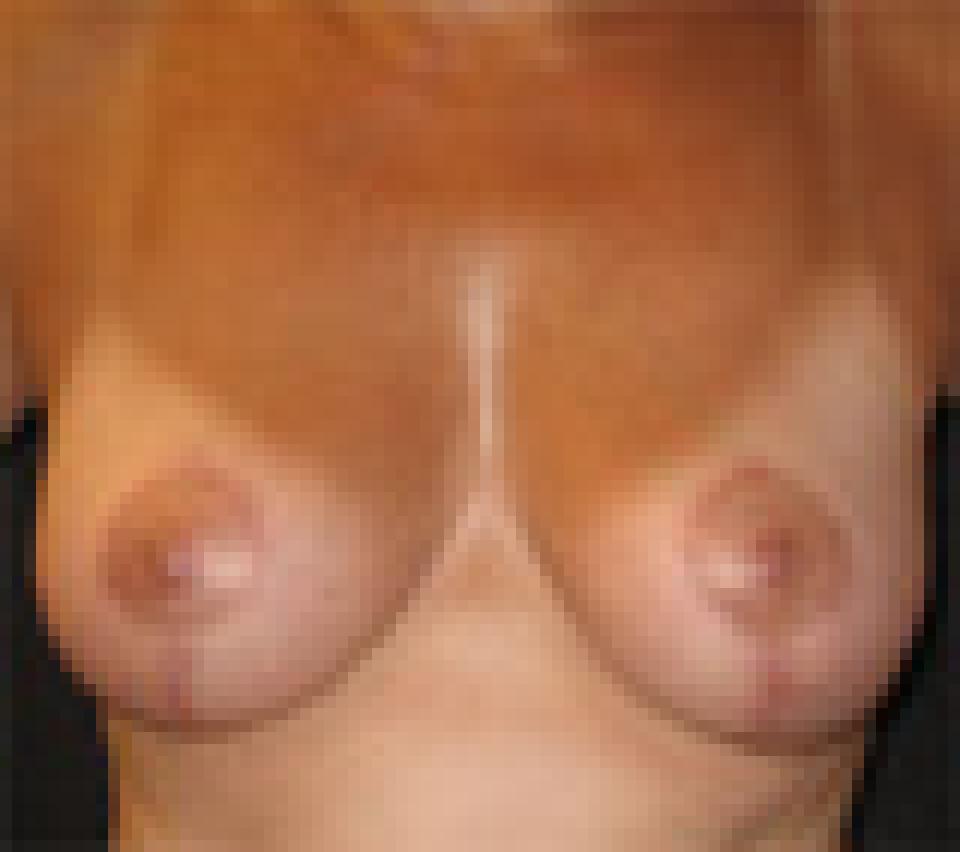 after
after
This case depicts a 52 year old woman who was happy with her breast size, but wished to have more shapely breasts. She underwent a short scar or "lollipop" incision breast lift. No implant was needed to achieve the breast size and shape she ultimately achieved.
The post-operative photographs depict her appearance at 9 months after surgery.
If a woman wished to have only a slightly larger bust size or slightly more fullness in the upper half of the breast, then a small implant may be added at the same time that the breast lift is performed.
 before
before
 after
after
This case depicts a 37 year old woman who had borne one child and had noted that her breasts had begun to sag and develop a deflated appearance.
She underwent a vertical or "lollipop" incision breast lift along with placement of 300 cc smooth, round saline implants beneath the pectoralis muscles. Her post-operative photographs depict her appearance approximately one year after surgery.
This case study also demonstrates how the nipple and areolar positions located too low and too close to the midline in this case, can be improved as part of the procedure.
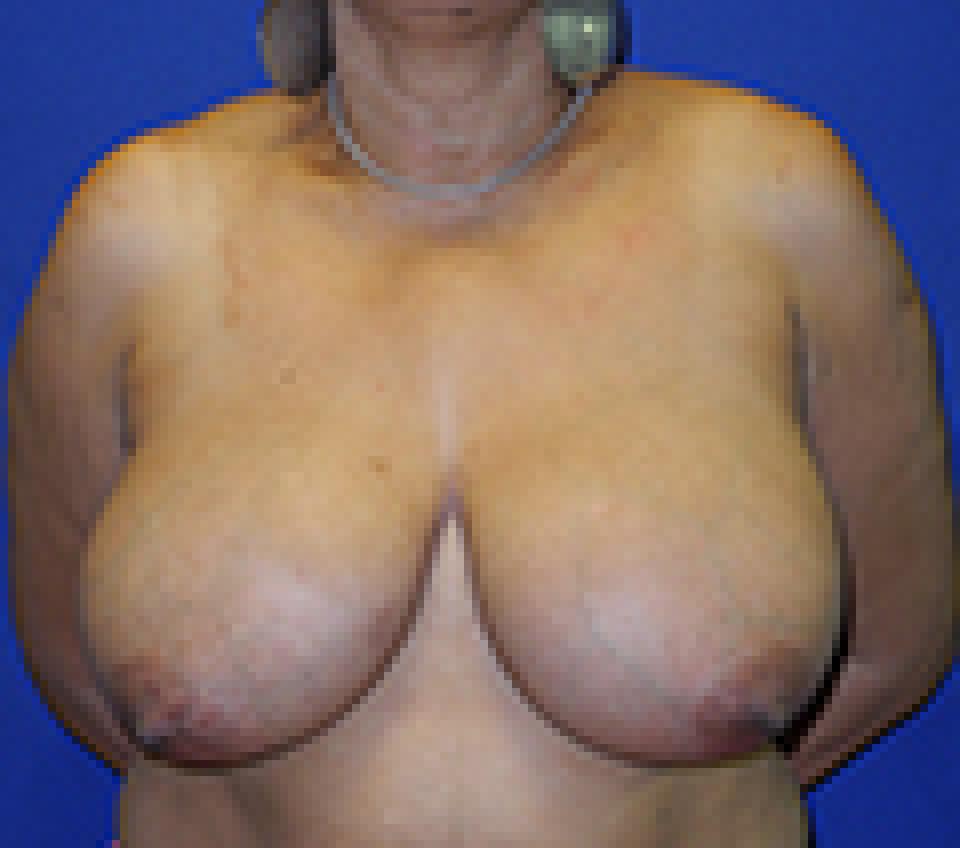 before
before
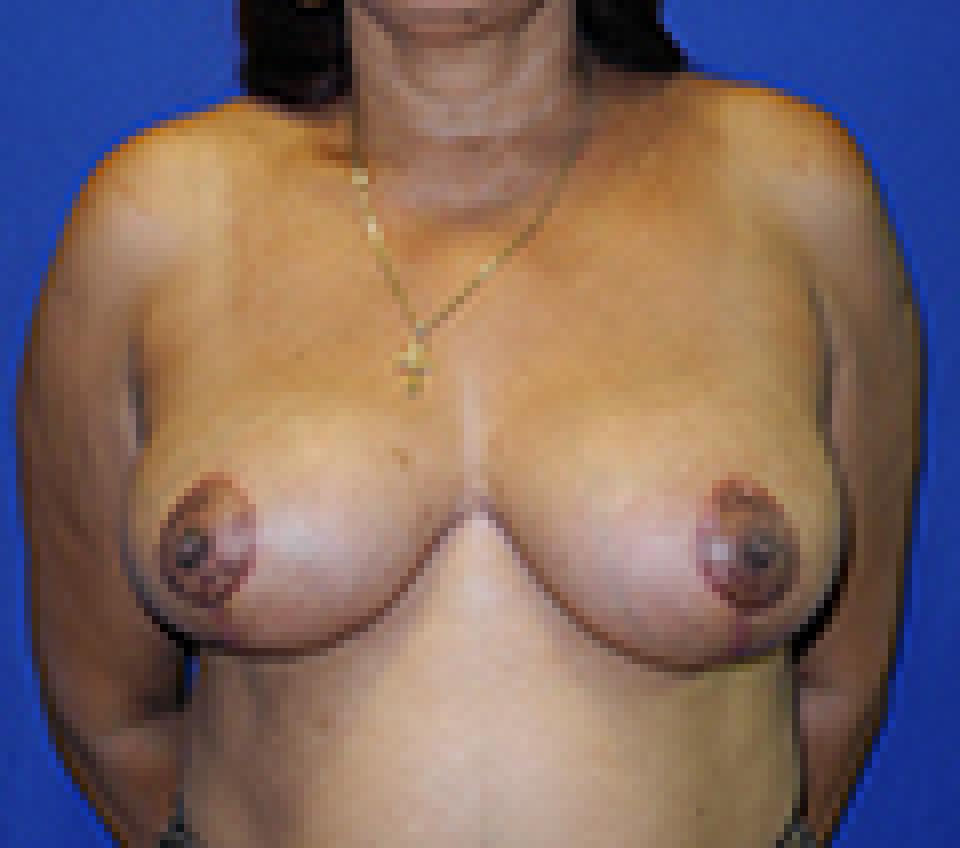 after
after
This 40 year old woman underwent breast reduction in which approximately one and a half pounds of tissue was removed from each breast. The remaining breast tissue was then rearranged to form a new breast shape that is shorter and rounder. This "rearrangement" process is very similar to what is done in a breast lift and in fact, each breast reduction I perform includes a breast lift.
In this individual’s case, the incisions used to perform the breast reduction were of the “lollipop” or short scar type. This method of breast reduction avoids any incisions in the cleavage and in most instances along the lower fold of the breast.
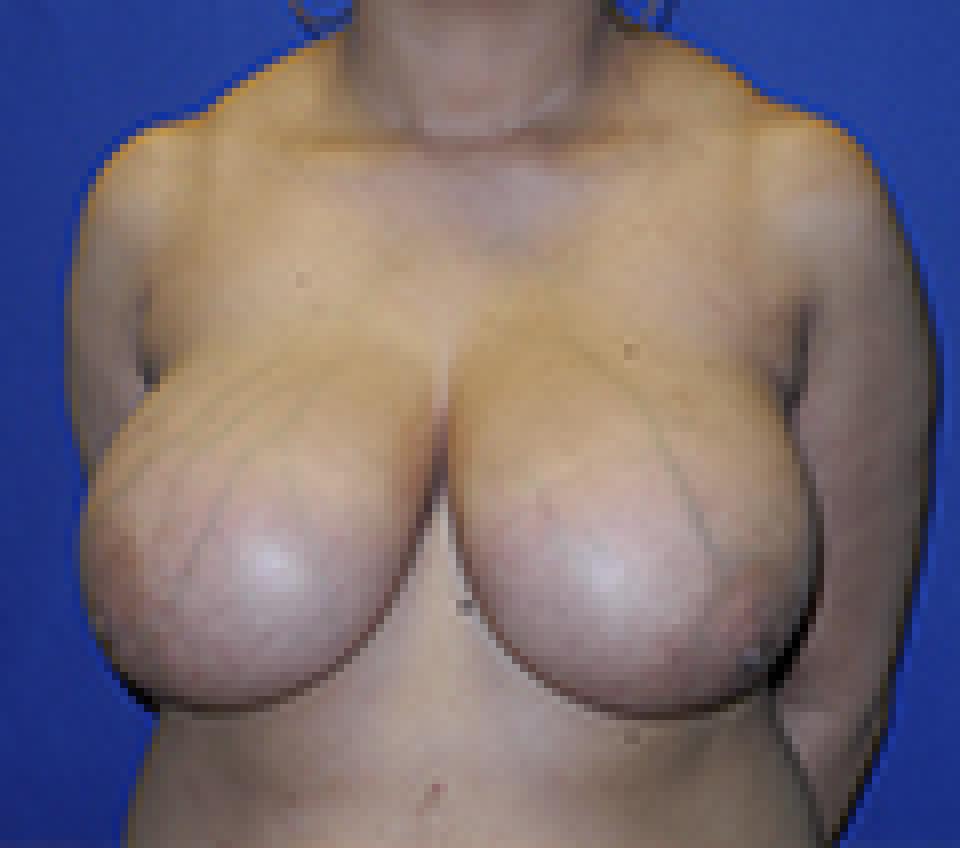 before
before
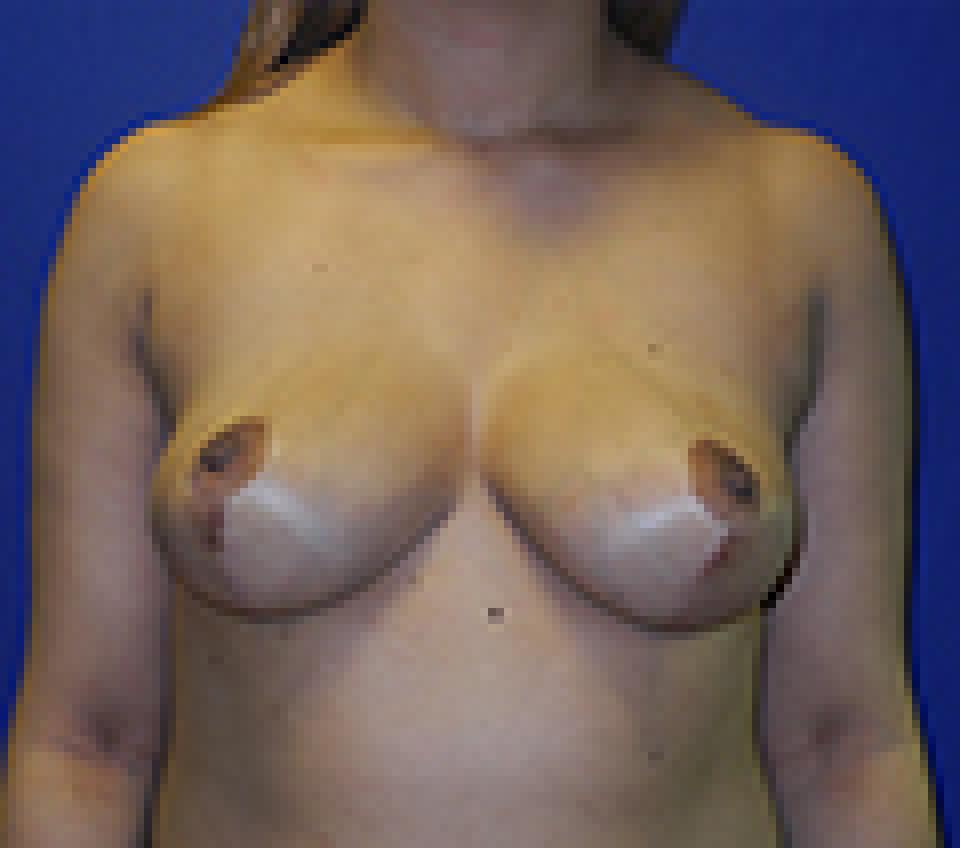 after
after
This 24 year old woman underwent breast reduction in which approximately two pounds of tissue was removed from each breast.
In this individual’s case, the incisions used to perform the breast reduction were of the “lollipop” or short scar type. This method of breast reduction avoids any incisions in the cleavage and in most instances along the lower fold of the breast.
Breast tissue, especially in young women, can be extremely dense and therefore heavy. Breast reduction can alleviate neck, shoulder and upper back pain and a variety of other symptoms that directly result from heavy breasts.
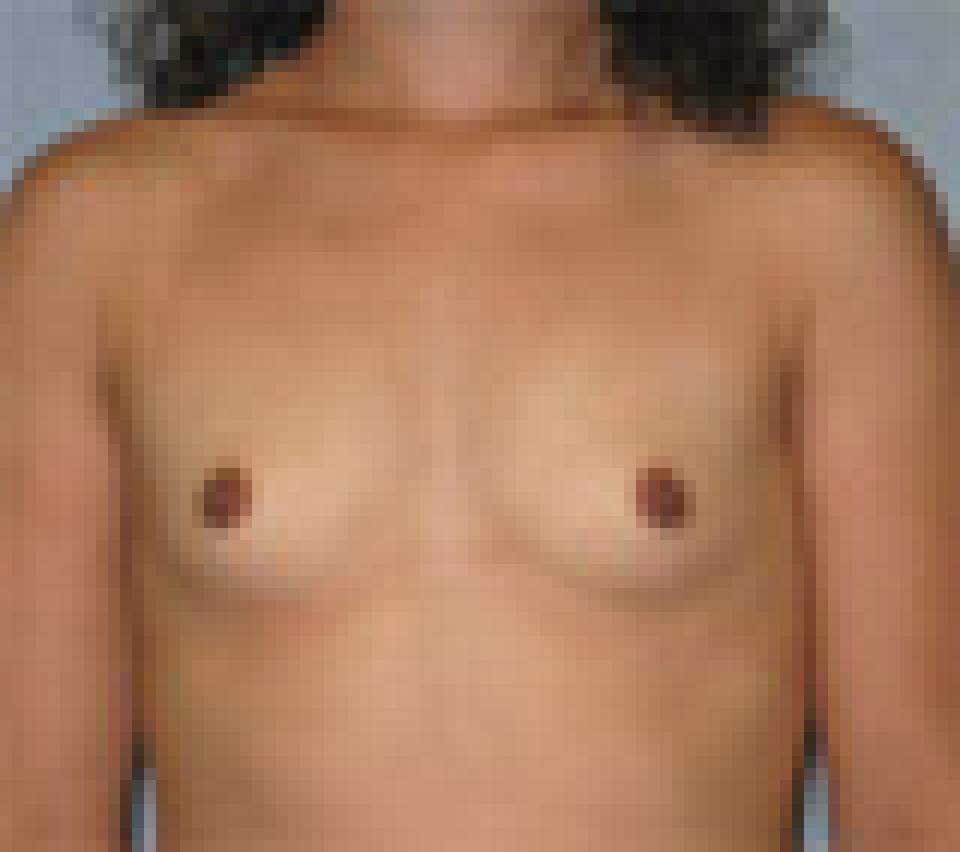 before
before
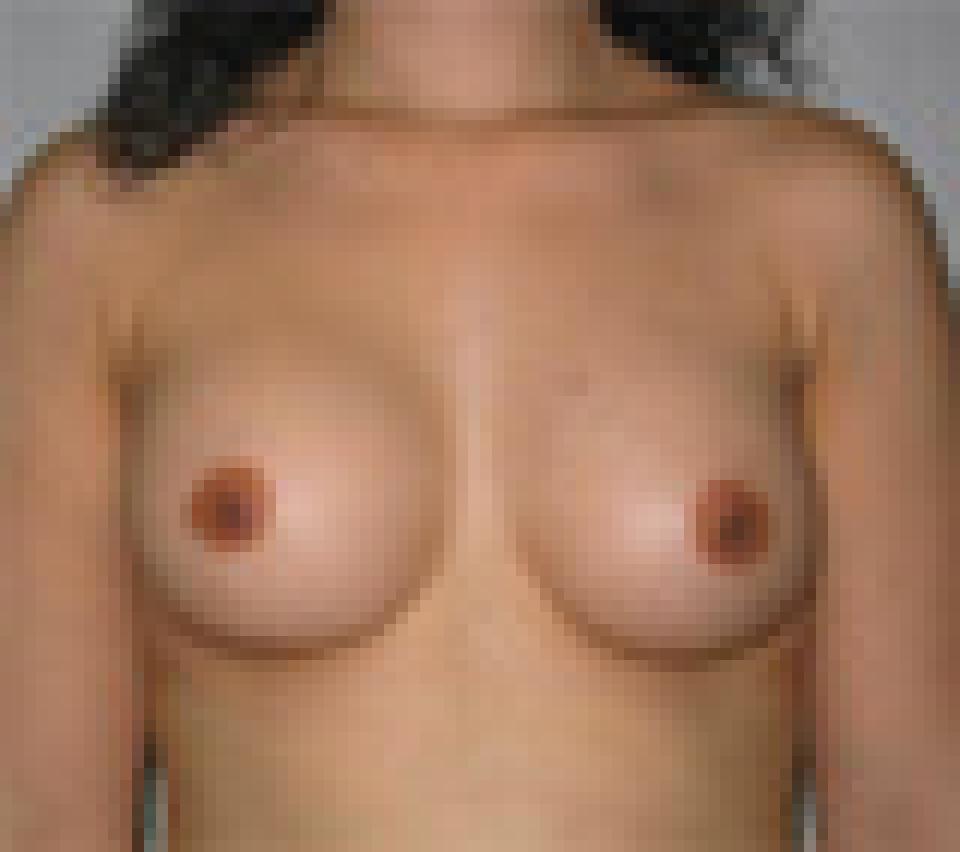 after
after
This case depicts a 29 year old woman who wished to have a larger and fuller bust. She underwent breast augmentation with smooth, round 350 cc saline implants.The implants were placed beneath her pectoralis muscles through an incision in the lower fold of the breast.
The post-operative photographs depict her at approximately 3 months after surgery. The infra mammary incision is a good option for women whose areolas are too small to undergo breast augmentation. Other options for such an individual include placing an incision in the axilla.
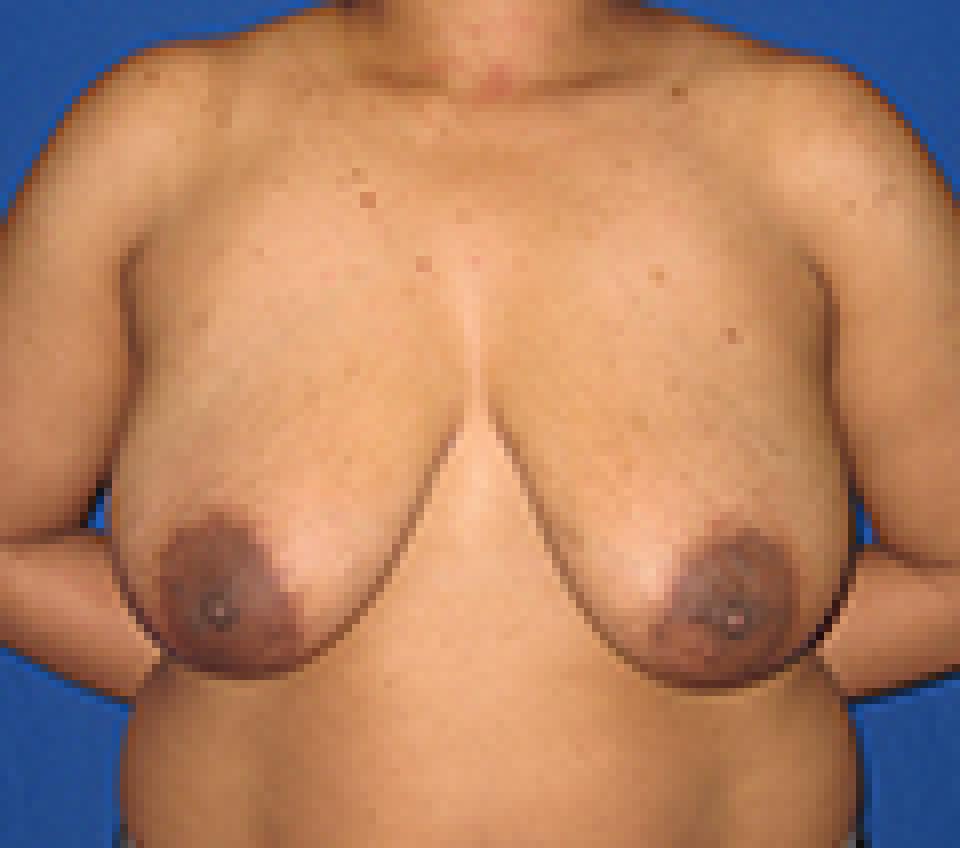 before
before
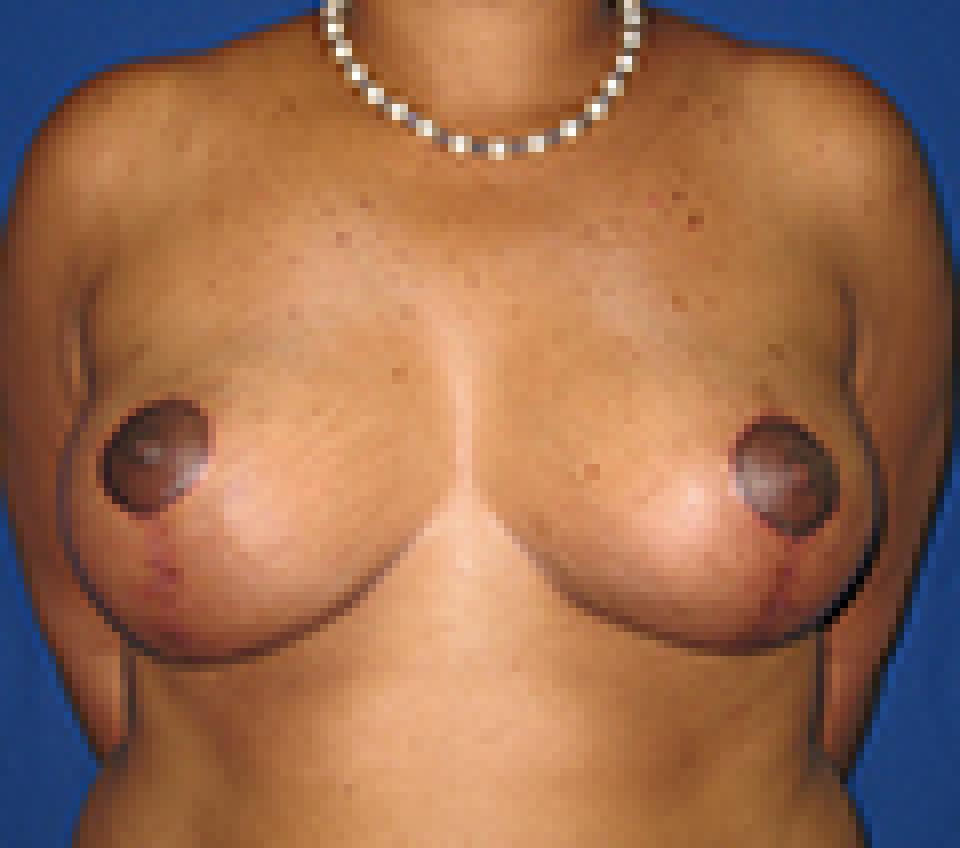 after
after
This 39 year old woman had a breast lift or mastopexy using a short scar technique which leaves behind scars in the shape of a “lollipop.” This technique, which I prefer to use, avoids any scars in the cleavage or on the side of the body beneath the arm. This makes swimsuit selection much easier if avoiding visible scars while wearing the swimsuit is a goal.
Candidates for a breast lift or mastopexy must have enough breast tissue to rearrange into a new breast shape that is typically shorter and rounder. If there is not enough breast tissue to rearrange and only excess skin, a situation that can occur when breasts involute following pregnancy, then an implant will be necessary to achieve a natural breast shape following surgery.
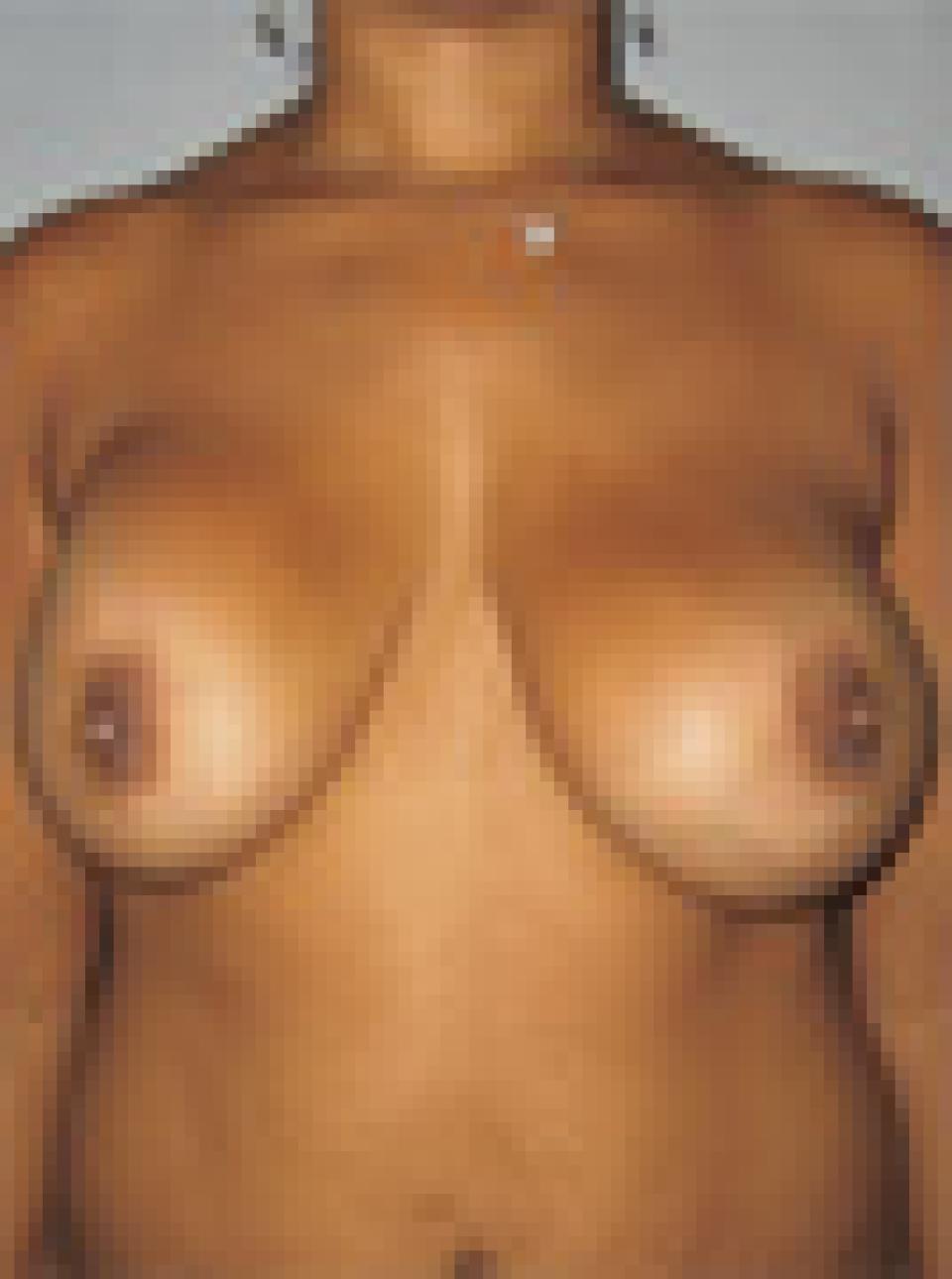 before
before
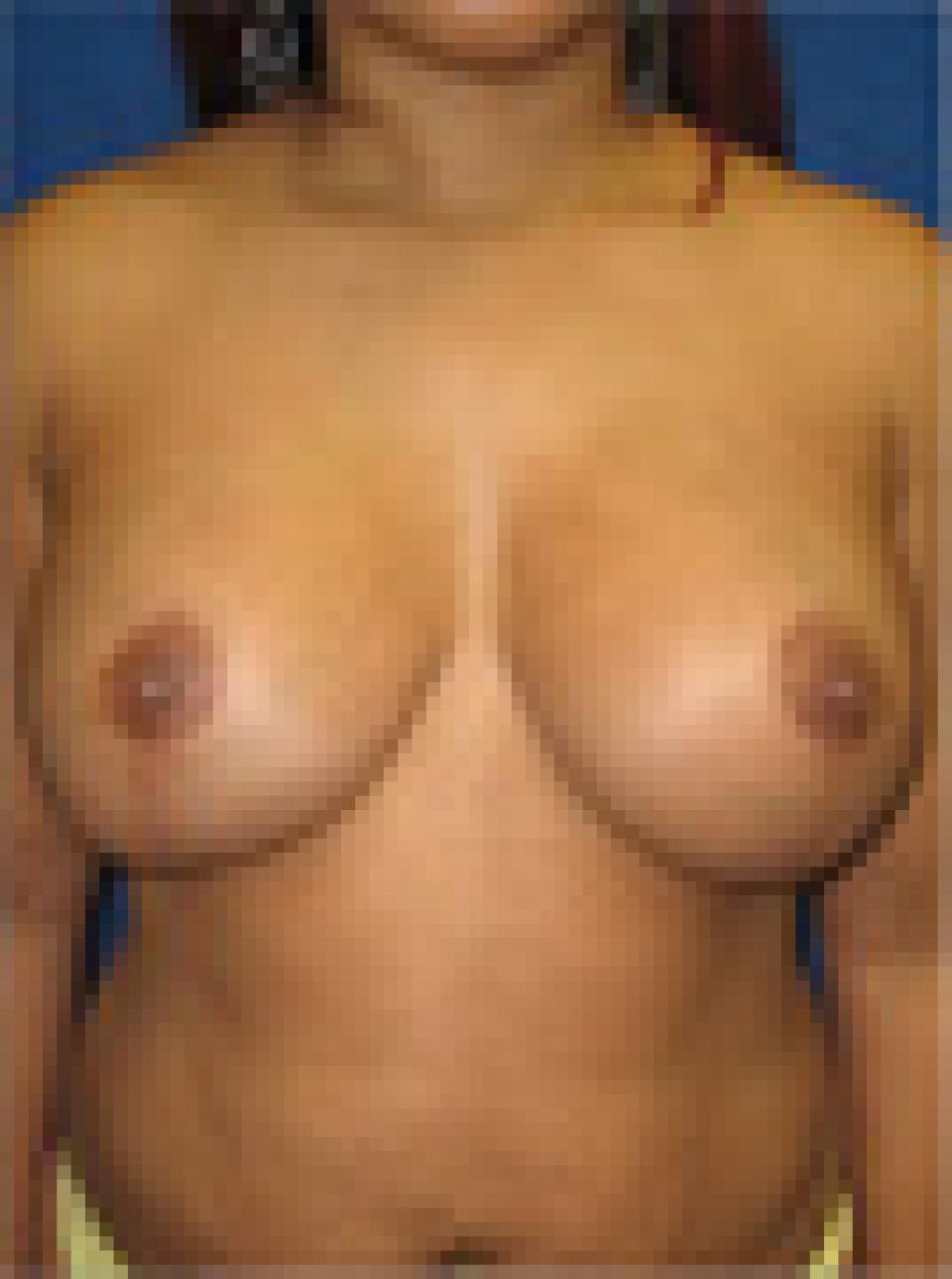 after
after
This case depicts a 30 year old woman who had undergone breast augmentation with 300 cc smooth, round saline implants placed above the pectoralis muscles via a periareolar incision by another surgeon approximately one year prior to her consultation with Dr. Belsley.
Her Grade IV capsular contracture was revised by exchanging her implants and placing the new 330 cc smooth, round saline implants below the pectoralis muscle and performing a vertical or "lollipop" incision breast lift. The post-operative photographs depict her appearance just under one year after her corrective surgery.
Dr. Belsley's Philosophy of Breast Augmentation
When it comes to deciding what approximate breast size you wish to achieve, the best advice I can give you is that you should be guided by your physical frame. Indeed, you may in fact be limited by it. In my practice, I select implants based upon your chest measurements, the quality of your breast skin and the size of your breasts prior to surgery.
I perform breast augmentation through a peri-areolar or inframammary approach and I place that vast majority of implants at least partially beneath the pectoralis muscle. My patients are welcome to select either saline or silicone filled breast implants. Silicone filled implants can in some cases achieve a more natural feel and may be a particularly attractive option for women with less breast tissue prior to surgery.
More >>Dr. Belsley's Philosophy of Breast Lift (Mastopexy)
In my practice, I perform breast lifts using incisions that result in a “lollipop” shaped scars. With good care and a bit of luck, these incisions heal well and the scars are difficult to see from a distance. Nevertheless, a woman who undergoes a cosmetic breast lift must be prepared for scars that are visible. This is one example of a “trade-off” in plastic surgery and of course, there are many others. This is one, however, that I feel is more than worthwhile in appropriate candidates.
More >>Dr. Belsley's Philosophy of Breast Revision
I apply the same criteria to patients who have had their surgery elsewhere as I do to my own patients. I am typically reluctant to re-operate on a breast augmentation patient for minor issues, because each time one undergoes revision, many of the risks of surgery tend to be multiplied. This is why I spend a great deal of time discussing size preferences and the likely outcome of surgery with my patients pre-operatively. It is said frequently that the most common reason for re-operation of the breasts in women who have had breast augmentation surgery is that they wish to “go bigger.” Ultimately, I feel that this is a poor reason to undergo repeated surgical procedures that can only result in more scar tissue, which is unpredictable, and thinning of the native tissues, which are necessary to cover the implant and provide a natural looking result. I encourage patients to think carefully about the risks of revision in cases where there is not a major problem.
More >>